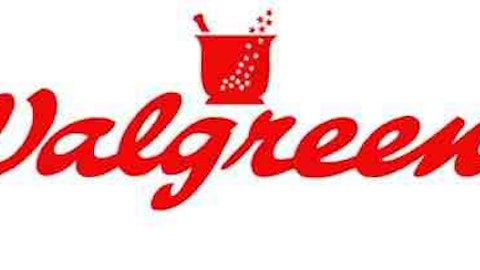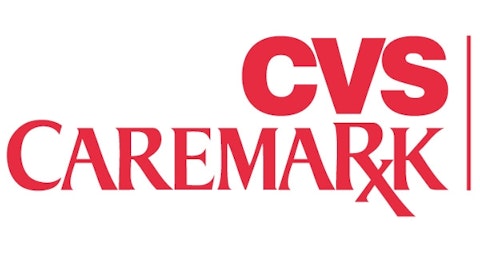Twenty-four days! That’s the amount of time we have left, including today, before state-run health exchanges are scheduled to open for business and individuals will be allowed to openly and transparently compare insurance plans between differing companies to see what suits their needs best.

Following Thursday night’s NFL opening game, I caught my first personal glimpse of the push to educate the public about the Patient Protection and Affordable Care Act. Living in Washington state, one of the 16 states that’s decided to participate in the state-run exchanges, I watched a town hall meeting that gathered some of my state’s top lawmakers to answer the public’s questions regarding the new bill, also known as Obamacare.

Source: White House on Flickr.
While the seemingly insurmountable technological aspects of getting the health exchanges ready for implementation and the difficult task of getting the public educated about Obamacare is ongoing, one concern that hasn’t left the forefront of a majority of folks’ minds since the bill was passed in 2010 is what it might do to health insurance premiums.
There is no question that something needed to be done to curb the willy-nilly progression of health-care premiums over the past couple of decades. However, skeptics abound as to whether the current bill will successfully keep premiums under control while providing equal or better care for Americans. In June, a Gallup poll showed that just 44% of Americans approved of the new law, while 52% opposed it. Needless to say, Obamacare has been fighting an uphill battle from the start.
However, new data revealed this week in a study by the Kaiser Family Foundation may prove that trudging uphill, in three feet of snow, both ways, may just be possible.
Score one for the Obamacare supporters
The Kaiser Family Foundation’s study (link opens PDF file) involved looking at all 17 states that had publicly released their insurance rate data, as well as the District of Columbia. With that information, the Kaiser Family Foundation utilized the number of insurers in each state, as well as a projection of the subsidized and unsubsidized premiums of various age groups within the largest city in each of these states, to compare health insurance premiums from one area to the next.
As you might suspect, there were some huge variances in premiums. In Baltimore, Md., and Albuquerque, N.M., the premiums for a 40-year-old on the bronze plan (one that covers 60% of medical costs) were the lowest, at $146 and $155 per month, respectively. In New York City and Burlington, Vt., they ran the highest at $308 and $336. The variance here has to do with existing laws long before the PPACA came along that didn’t differentiate premiums by age and disallowed insurers the right to deny coverage to people with pre-existing conditions.

Source: White House on Flickr.
What you probably didn’t expect is the finding by the Kaiser Family Foundation that premium costs in 15 of the 18 largest cities is lower than the Congressional Budget Office estimate of $320 per month as it relates to the average cost of the second-lowest cost silver level plan (the second-lowest cost silver plan is the benchmark for all subsidized comparisons).
Obviously, this study could wind up being a boon for insurers who could scoop up additional consumers with word that premiums are coming in lower than expected. Aetna Inc. (NYSE:AET), WellPoint, Inc. (NYSE:WLP), and CIGNA Corporation (NYSE:CI) have all made huge purchases to get their hands on the highly coveted Medicaid expansion member market, but would be wise not to ignore the individual markets in the states they operate, as they can use this lower-cost study to their advantage.
Another underlying beneficiary here would be drugstores such as Walgreen Company (NYSE:WAG), which has been actively promoting Obamacare in the hope of boosting its pharmacy business. If premium costs are coming in below projections, that’s all the more reason for Walgreen Company (NYSE:WAG) to trumpet this news to consumers. Simply put, insured individuals are much more likely to go and see a doctor and get a pharmacy prescription written than uninsured individuals.
Concerns on the horizon
Clearly this study is a big boost in favor of Obamacare. If these figures hold true, then dissenters to the plan will have little to complain about, with coverage for many people expanding and clearly more people than before the PPACA being insured. However, there are still variables that could derail this calculation and push premium costs higher.
For one, KFF’s study compared costs in 17 states plus the District of Columbia (i.e., from the states that have reported their insurance rate info). These 18 states/regions include 11 states that have chosen to take charge of their own state-run exchanges. This means that a majority of the yet uncalculated states are part of the federally run health exchange program that chose not to participate. It’s quite possible that costs could adjust upward in these non-committal states if fewer insurers choose to participate.
Second, as the study notes, in many states, one or just a very small handful of insurers controls a vast majority of the insurance market. Transparency should help curb any blatant premium overpricing, but in states where just two or three insurers operate, there’s nothing that stops these insurers from boosting premiums across the board. Take, for example, Rhode Island, Maine, Montana, Vermont, South Dakota, and Connecticut, which, according to KFF’s study, only have two or three insurance companies operating within their state. Sure, there are multiple plan options within the silver and bronze category — it’s not as if it’s a one-and-done take-it-or-leave-it type of health insurance plan — but in a consumer-driven market, competition breeds better pricing. With so few insurers still controlling individual states, premium pressures may still prove ongoing.
The bottom line
With just a hair over three weeks to go before individuals are given the green light to purchase insurance on state-run exchanges, it’s safe to say that the time for speculation is winding down. With disapproval of Obamacare touching its highest levels in two years this summer, KFF’s new study couldn’t have come at a better time. As an investor, I’d look for insurers and drugstores to use this news to their advantage in helping the public to become knowledgeable about the new law and to sign up for health insurance.
The article Obamacare Health Insurance Premiums: Lower Than Expected? originally appeared on Fool.com and is written by Sean Williams.
Fool contributor Sean Williams has no material interest in any companies mentioned in this article. You can follow him on CAPS under the screen name TMFUltraLong, track every pick he makes under the screen name TrackUltraLong, and check him out on Twitter, where he goes by the handle @TMFUltraLong.The Motley Fool owns shares of, and recommends WellPoint.
Copyright © 1995 – 2013 The Motley Fool, LLC. All rights reserved. The Motley Fool has a disclosure policy.



